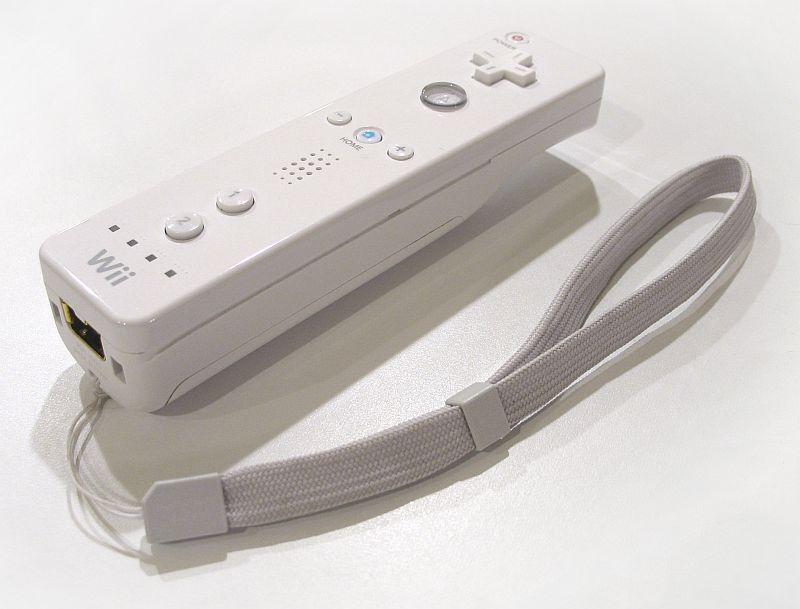An introduction to designing for motion-sensitive devices. A game designer must map game-world actions onto real-world input devices. For abstract activities like buy and sell, this
is easy, but it's harder to control the complex movements of a basketball player with a few buttons and joysticks. The Nintendo Wii's motion-sensitive controller and its competitors have revolutionized designing for games about physical activity. This short workshop introduces the subject. How it works. | 
| |
The Wii Remote |
|
Like most of my workshops, this one doesn't use computers; it's about imagination. I start with a lecture introducing the technology of motion-sensing, including accelerometers, angular rate sensors, cameras, and so on.
After the lecture participants divide up into teams of two to design the primary gameplay mode of a
new motion-based game of their own choosing. They have the option to choose any of the input devices discussed in the lecture, which includes the Wii Remote and its accessories, the new PlayStation wand, the Apple iPhone, Project Natal (so far as is known) and the Microsoft Surface. Using a worksheet, participants work together for about an hour, and then we discuss the results. Some of the ideas I've heard: - Snow sculpture
- Construction puzzles
-
Monkey tree racing
- Juggling trainer
- Dance teacher
and the weirdest and most wonderful: - Using a camera to put the player in a platform game world and letting his body serve as a platform for a computer-controlled character. (Think Lemmings, but the player is part of the game world.)
[ Back to the main Workshop page ] | 




